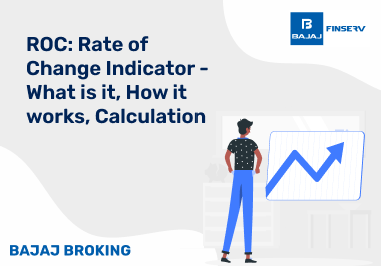Option Greeks meaning refer to the metrics used to assess various risk factors in options trading. These include Delta, Gamma, Theta, Vega, and Rho, each representing sensitivity to price, time, volatility, or interest rates. The objective is to help traders evaluate how different variables impact option pricing, allowing more informed decisions. Understanding these types is crucial for developing effective strategies and mitigating potential losses in volatile markets.
Option Greeks simply explained are a set of mathematical metrics used in the world of options trading to assess and understand how the price of an options contract may change in response to various factors. These Greeks provide valuable insights into the risk and behaviour of options. These Greeks help traders and investors make informed decisions and manage risks in the dynamic and multifaceted options market. Understanding the nuances of each Greek is essential for successful options trading strategies.
What Are The Objectives Of Option Greeks?
The objectives of options Greeks, a set of mathematical metrics used in options trading, are multi-faceted and essential for traders and investors. They serve the following key purposes:
Price Sensitivity Analysis
Greeks help in understanding how option prices will respond to various market factors. Delta gauges the sensitivity to underlying price changes, Theta quantifies time decay effects, Vega measures sensitivity to implied volatility, and Rho assesses the impact of interest rate changes. This knowledge assists traders in crafting strategies that align with their market outlook.
Strategy Optimization
By considering the Greeks, traders can optimise their options strategies. They can fine-tune their positions to achieve desired risk-reward profiles, adjust for time decay, and adapt to changing market conditions.
The objectives of options Greeks revolve around risk management, strategy optimisation, and informed decision-making, enabling traders to effectively navigate the options market and enhance their chances of success.
What Are The Types Of Options Greek?
Understanding Option Greeks is essential for evaluating how different variables impact the price of an option. These metrics enable traders to manage risk more effectively and make informed decisions. Each Greek letter—Delta, Gamma, Vega, Theta, and Rho—measures a specific factor, such as price movement, volatility, time decay, or interest rate sensitivity, in options trading.
Option Greek Delta
Delta measures how much the price of an option is likely to move when the price of the underlying asset changes. It ranges between -1 and 1. A call option usually has a positive Delta, while a put option carries a negative Delta. For example, a Delta of 0.60 means the option’s price would move ₹0.60 for every ₹1 change in the asset price.
Option Greek Gamma
Gamma reflects the rate at which Delta itself changes as the price of the underlying asset moves. It helps assess the stability of Delta and is usually higher for options that are at-the-money. Gamma is essential when managing portfolios with multiple options, as it signals how much an option’s Delta might shift with a slight price change in the underlying asset.
Option Greek Vega
Vega indicates how sensitive an option's price is to changes in market volatility. A higher Vega indicates that the option is more sensitive to shifts in implied volatility. When volatility rises, the option’s Vega increases its premium. Conversely, falling volatility lowers the premium. Vega is typically higher for options with longer time to expiry.
Option Greek Theta
Theta estimates how much an option's value declines as it approaches its expiration date—also known as time decay. It is typically unfavourable for buyers, as the option's value erodes over time. A Theta of -0.05, for instance, means the option will lose ₹0.05 in value per day, assuming other factors remain constant.
Option Greek Rho
Rho measures the sensitivity of an option's value to changes in interest rates. It’s more relevant for long-dated options. A Rho of 0.10 means the option's price will rise by ₹0.10 if interest rates go up by 1%. Rho affects call and put options differently, with a positive impact on calls and a negative impact on puts.
Conclusion
In conclusion, Options Greeks are a vital toolkit for participants in the complex world of options trading. These mathematical metrics, including Delta, Gamma, Theta, Vega, and Rho, offer a comprehensive understanding of how options respond to changes in underlying asset prices, time, implied volatility, and interest rates. Options Greeks empower traders and investors to assess and manage risk effectively, optimize their strategies, and make informed decisions.
By leveraging Delta, traders can hedge and control their risk exposure, while Gamma helps them grasp the curvature of options price movements. Theta provides insights into time decay, helping traders adapt to the passage of time. Vega allows traders to gauge sensitivity to changes in implied volatility, and Rho factors in interest rate impacts, particularly for European-style options.
Ultimately, mastering Options Greeks enhances one’s ability to navigate the dynamic and multifaceted options market, enabling more informed, strategic, and risk-conscious trading. Whether used for speculative or hedging purposes, a solid understanding of these metrics is a fundamental requirement for success in the world of options trading.
Disclaimer: Investments in the securities market are subject to market risk, read all related documents carefully before investing.
This content is for educational purposes only.














